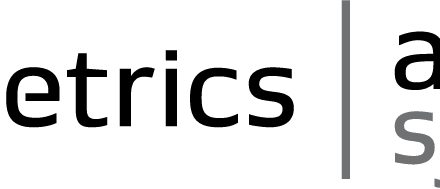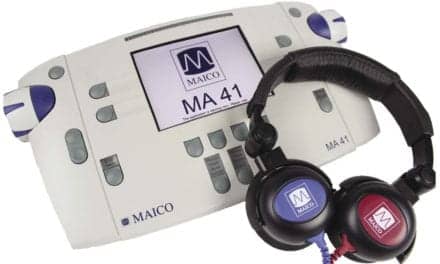By Karl Strom
The Institute of Medicine’s (IOM) Committee on Accessible and Affordable Hearing Health Care for Adults held its second of three open meetings on June 30 at the Keck Center of the National Academies in Washington, DC. This second meeting was comprised of six different Panel Discussions each focusing on a particular area of hearing healthcare and featuring 2-4 guest speakers followed by a Q&A period reserved for Committee members.
In the IOM Committee’s first meeting in April 2015, as well as in a January 2014 IOM-NRC event titled “Hearing Loss and Healthy Aging,” panelists provided background on the importance of hearing to individual and societal health, including issues such as isolation, social connectivity, well being, and economic productivity. The second meeting ran from 8 AM to 5 PM, and the panel topics were diverse, covering the gamut from hearing screenings in minority populations to future emerging technologies.
There is really no telling what will come of all this. The IOM is an independent, non-governmental, non-profit organization that serves as the health arm of the National Academy of Sciences. Its aim is “to help those in government and the private sector make informed health decisions by providing evidence upon which they can rely.” Some of the IOM reports have lingered in obscurity, while others have played a major role in forming government policy and decision-making. Noted hearing research scientist Frank Lin (who is also on this IOM Committee) stated at his 2014 ADA keynote presentation that IOM workshops provide a top-down formal response to pressing healthcare issues, with the potential of affecting change much faster than the typical bottom-up (ie, clinician to government) route.
Committee Chair Dan G. Blazer, MD, MPH, PhD, emphasized that comments at the open meetings are not necessarily reflective of what will ultimately be recommended in the Committee’s final Consensus Report due next year in May. The meetings are set up as fact-finding workshops.
Having said that, there are a number of important and/or controversial issues that keep floating to the top of the discussions. Here are a few of them, along with some comments:
Hearing loss is a major healthcare issue that must be addressed more systematically. Studies strongly suggest there is more to hearing loss than just aging and the associated physiological changes in the cochlea. Effects of hearing loss that require further examination also include changes in the brain and cognitive load. Beyond the obvious negative effects of not being able to hear well, hearing loss is also associated with falls, limited mobility and activity, decreases in social activity, emotional and mental health status, depression, quality of life, and increased caregiver burden. This is certain to appear in the final Consensus Report, albeit with some qualifications and/or recommendations for further study.
Hearing aids, hearing prosthetics, and hearing screenings are underutilized. The number of people in the United States using hearing devices remains relatively low—a 24-30% market penetration rate for hearing aids (although these figures have been debated, particularly by Edwards and Amlani & Taylor). Why? The primary reasons discussed, not necessarily in order, by the panel have been:
1) Out-of-pocket costs and a lack of insurance/reimbursement or a hearing aid tax credit;
2) Lack of education and awareness among consumers and physicians, as well as a lack of accessible hearing screening (including self-testing methods);
3) Lack of a continuum of care for those with mild and moderate losses, as well as a failure to adequately inform consumers about options such as assistive devices, and cochlear and osseo-integrated implants.
4) Inconvenience associated with the “gold standard” approach that often necessitates several visits to the hearing care professional;
5) Performance, benefit, and value issues associated with hearing aids (eg, comfort and hearing-in-noise issues versus costs in time and money), and
6) Stigma.
Obviously, many of these factors are inter-related. It should also be pointed out that each factor is complex and usually has many counterpoints. For example, out-of-pocket cost is almost certainly a deterrent to purchasing a hearing aid. Yet, even in countries that offer hearing aids for free or at greatly reduced costs, market penetration rarely exceeds 40%.
FDA definitions of hearing aids and PSAPs… This issue is at the front of the list of thorny topics. As with medical devices, FDA regulates hearing aids, which are defined as devices intended to compensate for hearing loss. But FDA does not consider personal sound amplification products (PSAPs) to be medical devices when labeled for recreational or other use by individuals with normal hearing—even if PSAPs look and function exactly like a hearing aid. We all know that some hearing-impaired consumers are using PSAPs as “starter hearing aids,” and many or most PSAP manufacturers are marketing their products to them—to the consumers’ benefit or detriment, depending on where you stand. So, will the Committee recommend the FDA revisit their definition of “hearing aid,” create a separate class for lower-power over-the-counter (OTC) devices similar to the 2003 Killion & Gudmundsen Citizen’s Petition, or propose something else? It’s impossible to tell. There is ample evidence that those hearing care professionals who adhere to best practices contribute strongly to positive outcomes with amplification. There is also a need for a greater continuum of care for the larger population of (predominantly younger) consumers with milder losses. Whatever the recommendation made by the Committee—if any—one would hope that it is an economically fair and an “across-the-board” solution, rather than the current one that essentially requires FDA to look the other way or pretend infractions are inconsequential, and requires PSAP manufacturers to hide their messages of hearing help in their marketing.
…or providing more access to and distribution of low-cost hearing aids. They might not admit it, but rest assured that every global hearing aid manufacturer has a kick-ass PSAP hidden in the back of their R&D closet. My guess is that many or most have designs for self-fitting and teleaudiometry-friendly hearing aids, as well. Hearing aids with manufacturer suggested retail prices (MSRPs) under $1000 are widely available. The problem is that traditional dispensing business models (ie, paying for staff time, instrumentation, brick-and-mortar, marketing, etc) are not geared for the distribution of lower-cost devices. So, the questions are: 1) Does the Committee risk upsetting the apple cart by recommending alternate distribution channels that circumvent and potentially damage the current “gold standard” of comprehensive hearing care access for an FDA-defined medical condition? 2) Or is the “invisible hand” of production and distribution (eg, Big Box and pharmacies, Internet, wearables, etc) already taking care of this problem? and 3) As mentioned previously, how formidable a barrier is price in hearing aid adoption? A recent study by Robyn Cox and colleagues showed no statistically or clinically significant differences between the premium and basic level hearing aids on any measures of outcome for either new or experienced hearing aid users.
Medicare and reimbursement for hearing aids. Most consumers are shocked when they discover a hearing evaluation and hearing aid are not covered by Medicare or their healthcare insurance. A presentation to the Committee by Susan Miller of the Centers for Medicare and Medicaid Services (CMS) made it clear that CMS has no real control over the former. Medicare coverage for hearing aids and related services are currently excluded by the Social Security Act of 1965, and it would take an act of Congress to amend the Act. She says that, when government agencies analyze areas for improvement in healthcare, they generally look at the treatment’s potential for increasing overall patient outcomes at the national level. So, again, the hard data on the benefit of hearing aid treatment—which doesn’t exist yet—is a requirement for change. There was also discussion about research showing that patients who are covered under insurance or purchase aids at discounted prices are less likely to follow through with their recommended rehab or use their devices (ie, they have “less skin” in the game). It’s possible that the Committee could recommend revision of the Social Security Act for inclusion of hearing aid benefits. But, in this case, we are probably looking at many years. Mandates for insurance coverage or passage of a tax credit should also make it into their recommendations. But all of these should include provisions for the choice of provider and quality treatment options.
Access issues and medical evaluations. It seems apparent that hearing loss is a chronic medical problem. But do the current “Red Flags” and “waiver” systems work, and should a medical evaluation remain a requirement for obtaining a hearing aid? So far, most of the physicians on the panel and in their presentations say “yes.” On one hand, as many as 5% of people with hearing loss could have a condition that might benefit from approaches other than amplification (eg, conductive loss, ear wax impaction, etc) or in much rarer cases have a life-threatening disease (eg, acoustic neuroma). On the other hand, the current medical evaluation/waiver requirement stands as a significant impediment to any real mass-consumer approach for distributing hearing aids. Thus, one of the key questions revolves around the overall benefit versus risk in tinkering with the current “Red Flags” and “waiver” systems via product labeling.
Role and scope of practice for providers. When perusing the members of the IOM’s Committee on Accessible and Affordable Hearing Health Care for Adults, conspicuous in their absence are the lack of representatives from the major professional organizations (eg, ASHA, AAA, ADA, IHS) or from industry (HIA and CEA). With the former, it’s a fair guess the committee is wisely avoiding the counterproductive internecine turf wars that have been the hallmark of “government hearings” since the 1970s. With the latter, it seems reasonable they desire a consumer-centric approach (apart from industry) in arriving at solutions for affordable and accessible hearing care—while conferring greater legitimacy to the final Consensus Report. The Committee did hear presentations at the second meeting from primary care physician Dr Philip Zazone, audiologist Gail Linn, hearing instrument specialist Michael Andreozzi, and ENT Dr Wade Chien, all of whom described their scope of practice and perspectives. However, given the Committee’s members, it would be surprising if they recommended anything to change the dynamics between the key stakeholders. Except for a recommendation for training more audiology assistants and technicians to compensate for the dearth of hearing care professionals (about 25,000 licensed US dispensers in 13,000 offices for 30 million hearing-impaired people), it appears unlikely the Committee will get into hot political waters such as recommending limited physician licensure and direct access to audiologists (eg, AAA’s direct access and ADA’s 18×18), the ASHA-AAO compromise for expanded Medicare access, or greater participation of hearing aid specialists in VA programs (IHS’s Fit to Serve). However, it is conceivable recommendations could be made regarding tinnitus and vestibular disorders training and treatment.
There were many more issues discussed, or at least touched upon, by the Committee during the second meeting, any or all of which might end up in their final Consensus Report. These could include recommendations related to:
- Lack of professional reimbursement (and coding) for aural rehabilitation (eg, HR 2748 HEAR Act);
- Need for more research on the efficacy of hearing loss treatment, which is one reason for the lack of hearing screening by physicians (cf, elimination of hearing loss from “Welcome to Medicare” physical exam);
- Development of a truly open wireless platform and, until one is established, increased education about the use of induction loops and telecoils;
- Bundling versus unbundling of prices for hearing aid products and services;
- Best practices in hearing healthcare, including real-ear measurement;
- Tele-audiology/tele-practice, its effectiveness at the VA and potential for hearing healthcare, as well as the need for more development of technologies for remote hearing evaluations and remote hearing aid programming;
- Self-fitting and self-adjustable hearing aids;
- Younger people and their access to amplification and hearing conservation;
- Better routes for patients with tinnitus and progressive tinnitus management;
- Need to invest in and promote better hearing screening tools;
- Absence of hearing status on many electronic medical records (EMRs);
- Costs associated with professional care and current FDA regulation versus risk and benefit associated with self-driven hearing solutions;
- Recent innovations in hearing aids, and the potentially disruptive technologies of “wearables” and “hearables.”
The third and final open meeting of the IOM Committee on Accessible and Affordable Hearing Health Care for Adults will be held on September 10.
Update: The presentation slides from the second meeting are avaiable at: http://iom.nationalacademies.org/Activities/HealthServices/HearingHealthCareForAdults/2015-JUN-30.aspx
What do you think? Chime in with your opinion below.
Karl Strom is editor-in-chief of The Hearing Review and has been reporting on hearing healthcare issues for over 20 years.






All are focusing on the healthcare but only few thinks about hearing healthcare.The hearing healthcare should be taken care of too.Thanks for this quality content.
Great reporting on this meeting, Karl!
Steve: Written public comments and questions are welcome at any time during the study and can be submitted to [email protected].
A good “starting page” at IOM that shows the scope, Committee roster, etc, is at http://iom.nationalacademies.org/Activities/HealthServices/HearingHealthCareForAdults.aspx
Thanks Kathi and Veronica. The topics covered by the Committee literally span the entire gamut of the most important and controversial issues in hearing care. They have a big task in front of them, because few things in our industry’s “ecosystem” go undisturbed by even slight changes, let alone major ones. But I think the Committee’s approach has been a good one and the presentations with few exceptions have been fascinating. What the Committee’s final recommendations will look like are anyone’s guess. Thanks again for your comments.
Hey, nice wrap-up. I listened in on parts of the meeting using the (better late than never) CART captioning.
There are so many things changing: technology, providers, channels of distribution, cost (via Costco, e.g.). It’s really tough to sort it all out. You did a good job.
thanks
k
What avenues are available to the hearing impaired consumer to get involved in this typically convoluted government process?
Great article and a must read for every audiologist. I would also recommend this article be on a list of must reads for students pursuing audiology as a profession.